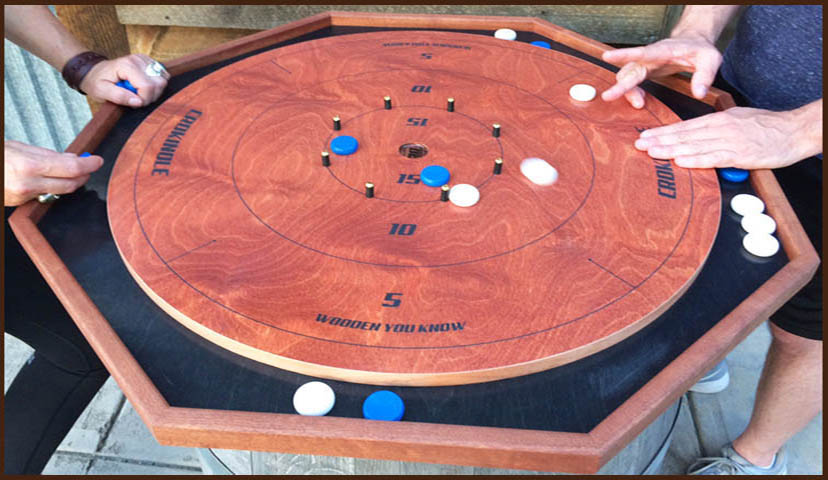What Is Crokinole?
The tradition of Crokinole began in Canada sometime in the 1860s and appears to be a unique blend of several older English, French, German, and East Indian games. The name comes from the French croquignole, which is a type of cookie or biscuit. It is also used to describe the action of flicking the disc with the finger.
The oldest board still in existence comes from Perth County, Ontario, Canada. It was made by craftsman Eckhardt Wettlaufer in 1876 for his five-year-old son, Adam. The game became a popular pastime, especially in the Ontario area.
While the popularity of the game has waxed and waned over the last century and a half, it made a huge resurgence when Wayne Kelly published his definitive The Crokinole Book. After that, a World Crokinole Championship was established, with the tournament taking place in Tavistock, Ontario - Eckhardt Wettlaufer’s hometown. The game has continued to grow in popularity from Ontario down to New York and throughout the rest of Canada and the United States.
The game is usually played between two players, or four players in teams of two. Players take turns flicking their discs from the outer edge of the board onto the field. If there are any opponent discs on the board, a player must make contact with an opponent disc during the shot. If unsuccessful, the disc and any other of the player’s discs that were moved during the shot are removed from the field of play. If there is no opponent disc on the board, a player must aim for the 15-point guarded ring line. During any shot, any disc that falls completely into the "20" hole is removed from play and counts as twenty points for the owner of the disc at the end of the round. End scoring occurs after all discs (usually 8 per player or 12 per team) have been played.
The dimension of the playing surface of the Wooden You Know boards are built to tournament standards – 26 inches in diameter with scoring rings at 8, 16 and 24 inches in diameter.
For a complete set of rules to Crokinole, download this PDF.

